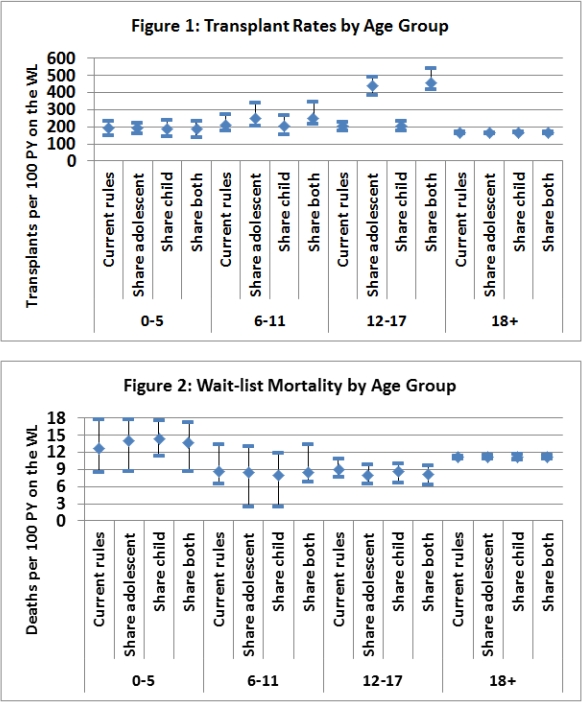Broader Geographic Sharing of Adolescent Lung Donors Improves Allocation Efficiency
1Cleveland Clinic, Cleveland, OH
2SRTR, MMRF, Minneapolis, MN
3IN University, Indianapolis, IN
4University of MI, Ann Arbor, MI
5University of MN, Minneapolis, MN.
Meeting: 2015 American Transplant Congress
Abstract number: 121
Keywords: Allocation, Lung transplantation, Pediatric
Session Information
Session Name: Concurrent Session: Lung: Optimizing Outcomes
Session Type: Concurrent Session
Date: Sunday, May 3, 2015
Session Time: 4:00pm-5:30pm
 Presentation Time: 4:36pm-4:48pm
Presentation Time: 4:36pm-4:48pm
Location: Room 115-C
Allocating pediatric donor lungs to pediatric lung transplant (TXP) candidates results in better graft function. However, 87% of adolescent (ADL) donor lungs are allocated to adults. We hypothesized broader geographic sharing of pediatric lungs will increase pediatric to pediatric transplants without impacting adults. We studied US TXP candidates from July 1, 2009, to June 30, 2011. Current policy offers ADL donor lungs sequentially to ADL (ages 12-17 years), child (≤11 years), and adult (≥18 years) candidates in the local donor service areas (DSA) before expanding offers in 500-mile radius increments until organ acceptance. Child lungs are offered to children in the local DSA+1000-mile radius, then to ADL in the DSA+500-mile radius, then to adults in the DSA. We used the SRTR thoracic simulation allocation model to simulate broader geographic sharing. Simulation 1: offer ADL donor lungs to ADL, then children in a 1000-mile radius, then adults in the local DSA. Simulation 2: offer child donor lungs to children, then ADL in the local DSA+1000-mile radius, then adults in the DSA. Simulation 1 resulted in twice the ADL TXP compared to current rules (442.5 ADL TXP per 100 patient-years on the waiting list, range 386.5-488.4, vs. 205.7, range 180.0-228.0). Simulation 2 resulted in TXP rates similar to rates under current rules. Combining simulations 1 and 2 resulted in 461 ADL TXP per 100 patient-years (range 417.2-541.8) with no increase in child TXP rates. Under simulation 1 and combined 1 and 2, the proportion of ADL to ADL TXP increased by 80%. In all simulations, adult TXP and waitlist mortality rates were similar to rates under current rules. Broader geographic sharing of ADL donor lungs may increase allocation efficiency for ADL without adversely affecting children and adults. Our findings may be explained by the small number of child TXP, higher utilization of ADL donor lungs, or preferential LAS system allocation to the sickest adults. 
To cite this abstract in AMA style:
Tsuang W, Pyke J, Skeans M, Chan K, Wozniak T, Israni A, Hertz M, Kasiske B, Valapour M, Snyder J. Broader Geographic Sharing of Adolescent Lung Donors Improves Allocation Efficiency [abstract]. Am J Transplant. 2015; 15 (suppl 3). https://atcmeetingabstracts.com/abstract/broader-geographic-sharing-of-adolescent-lung-donors-improves-allocation-efficiency/. Accessed July 3, 2025.« Back to 2015 American Transplant Congress
